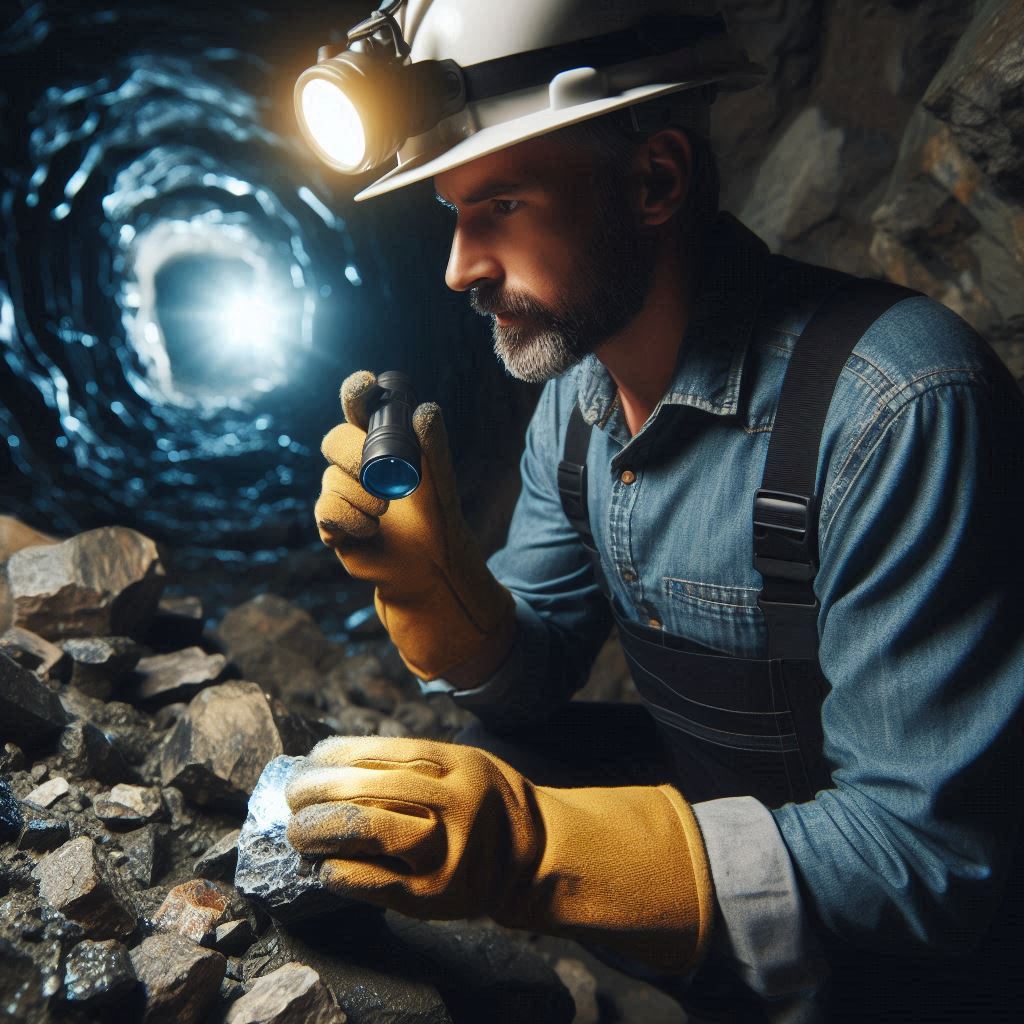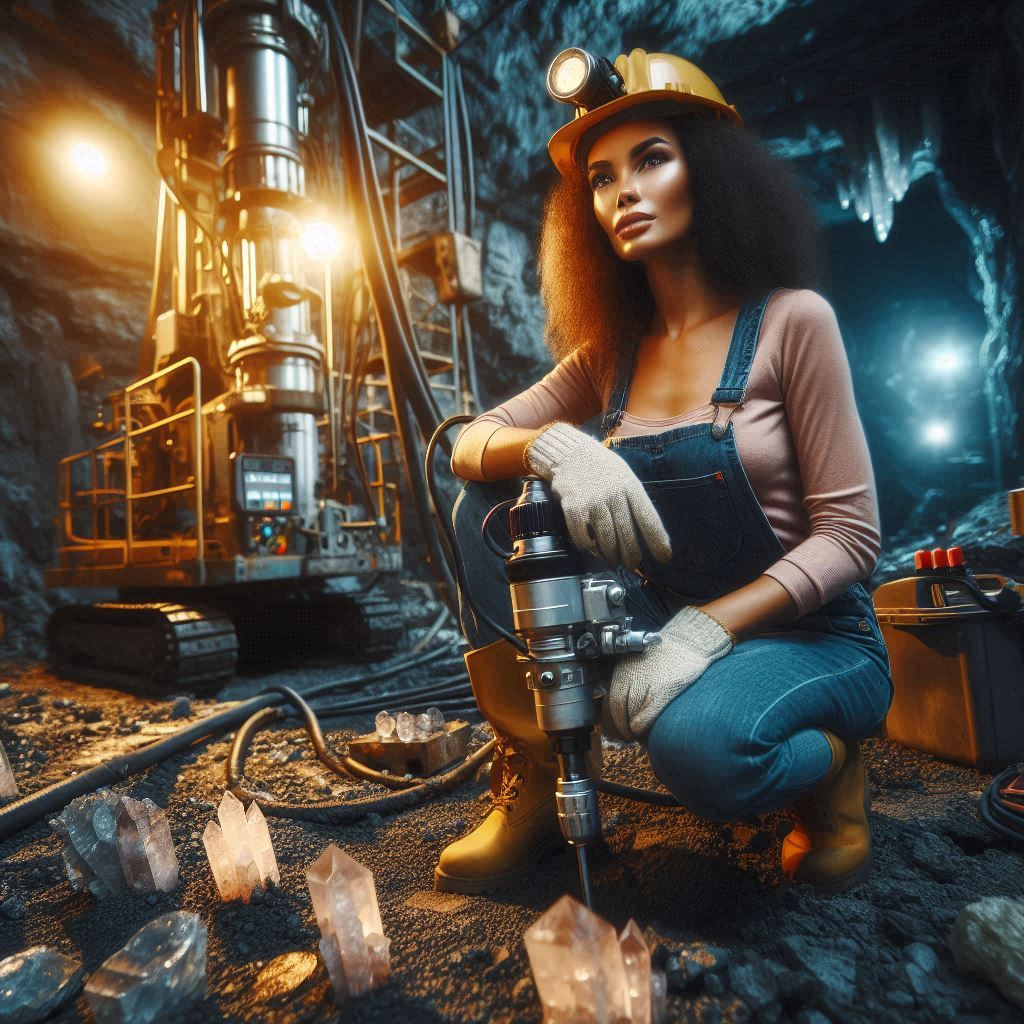Introduction
Sustainable mining engineering is crucial for preserving our planet.
Traditional mining practices often harm the environment.
These practices can lead to deforestation, water contamination, and loss of biodiversity.
They also contribute significantly to greenhouse gas emissions.
Recognizing these impacts, the mining industry faces increasing pressure to adopt sustainable practices.
Sustainable mining aims to minimize environmental damage while maximizing resource efficiency.
This approach balances economic growth with environmental protection and social responsibility.
It emphasizes reducing waste, conserving water, and rehabilitating mined land.
Sustainable mining also focuses on using renewable energy sources and reducing carbon footprints.
Sustainable mining engineering integrates advanced technologies and innovative methods.
These innovations include automated machinery, precision mining, and real-time environmental monitoring.
Engineers design processes to minimize energy use and waste production.
They also develop techniques for recycling and reusing materials.
This reduces the need for new resource extraction, conserving natural resources.
Community engagement and social responsibility are also key aspects of sustainable mining.
Engineers collaborate with local communities to ensure their needs and concerns are addressed.
They work to create job opportunities and support local economies.
This fosters positive relationships and ensures that mining activities benefit all stakeholders.
On a final note, sustainable mining engineering is vital for mitigating the negative impacts of traditional mining.
It offers a balanced approach that benefits the environment, society, and the economy.
As the industry evolves, adopting sustainable practices will be essential for its future success.
By embracing sustainability, mining can become a more responsible and beneficial activity for all.
Conducting thorough environmental impact assessments
Importance of Understanding the Potential Environmental Consequences of Mining Projects
Understanding the environmental consequences of mining projects is crucial.
Mining activities can significantly impact ecosystems and human health.
Engineers must consider the potential for air and water pollution, soil degradation, and habitat destruction.
Awareness of these consequences allows for better planning and decision-making.
Preventing environmental harm is a key responsibility for mining engineers.
How to Assess the Impact of Mining Activities on Air, Water, and Soil Quality
Assessing the impact of mining on air, water, and soil quality involves several steps.
First, conduct baseline studies to understand pre-mining conditions.
Measure air quality, water purity, and soil health before starting any project.
Use advanced monitoring technologies to track changes during mining operations.
Regularly sample air, water, and soil to detect contamination early.
Analyze data to identify trends and potential problems.
Involving environmental scientists ensures accurate and comprehensive assessments.
Strategies for Minimizing and Mitigating Environmental Impacts
Minimizing and mitigating environmental impacts requires proactive strategies.
Implementing best practices reduces negative effects on the environment.
Use environmentally friendly technologies and methods in mining operations.
For instance, adopt dust suppression techniques to improve air quality.
Utilize water treatment systems to prevent water pollution.
Implement soil conservation practices to maintain soil health and prevent erosion.
Read: Biomedical Engineer: Working in Healthcare Tech
Implementing best practices for waste management
Importance of proper waste disposal and management in mining operations
Proper waste disposal is crucial to prevent environmental degradation and health hazards.
Ineffective waste management can lead to soil and water contamination, impacting local communities.
It is imperative for mining companies to follow regulations and guidelines for waste disposal.
How to reduce and recycle waste generated from mining activities
Adopting a waste minimization approach by identifying opportunities to reduce waste at the source.
Implementing on-site recycling programs for materials like metals, plastics, and paper.
Engaging in partnerships with recycling facilities to ensure proper disposal of recyclable materials.
Strategies for disposing of hazardous materials safely
Performing thorough risk assessments to identify hazardous materials generated during mining operations.
Segregating hazardous materials from non-hazardous waste streams to prevent cross-contamination.
Utilizing specialized disposal methods such as incineration or chemical treatment for hazardous waste.
Read: Biomedical Engineering: Industry Outlook 2024
Incorporating renewable energy sources
Overview of the Benefits of Using Renewable Energy Sources in Mining Operations
Using renewable energy sources in mining operations offers numerous benefits.
Renewable energy reduces the carbon footprint of mining activities.
It lowers greenhouse gas emissions, making mining more environmentally friendly.
Renewable sources also decrease dependency on fossil fuels, enhancing energy security.
Moreover, they reduce operational costs by cutting down energy expenses.
Costs by cutting down energy expenses.
How to Integrate Solar, Wind, or Geothermal Energy into Mining Processes
Integrating solar energy into mining processes involves installing photovoltaic panels on-site.
These panels convert sunlight into electricity, powering mining equipment and facilities.
Solar energy is particularly effective in regions with high sunlight exposure.
Wind energy integration requires the installation of wind turbines.
These turbines harness wind power to generate electricity for mining operations.
Wind energy works well in areas with consistent and strong winds.
Geothermal energy integration involves tapping into the Earth’s natural heat.
Engineers drill wells to access geothermal reservoirs, using the heat for electricity generation.
Geothermal energy is highly reliable and provides a continuous power supply.
Case Studies of Successful Implementation of Renewable Energy in Mining Engineering
Several mining operations have successfully implemented renewable energy sources.
One notable example is the DeGrussa Solar Project in Australia.
This project integrates a solar power plant with an existing copper-gold mine.
The solar plant generates significant power, reducing the mine’s reliance on diesel.
Another successful case is the Diavik Diamond Mine in Canada.
The mine uses a wind farm to generate power, significantly cutting its diesel consumption.
This wind farm provides a substantial portion of the mine‘s energy needs.
The Puna Geothermal Venture in Hawaii serves as another excellent example.
This project utilizes geothermal energy to power mining operations.
The geothermal plant provides a reliable and consistent power source, reducing fossil fuel dependence.
Read: Biomedical Engineering: Research and Development

Promoting Community Engagement and Consultation
Importance of involving local communities in mining projects
One of the best practices in sustainable mining engineering is to actively involve local communities in mining projects.
This is crucial for several reasons.
Firstly, local communities are directly impacted by mining activities and should have a say in how these projects are carried out.
By involving them from the early stages of planning, mining companies can better understand the needs and concerns of the community, leading to more sustainable and socially responsible mining practices.
Moreover, engaging local communities can help build trust and foster positive relationships between stakeholders, leading to long-term success and support for mining projects.
How to establish open communication channels with stakeholders
Effective communication is key to promoting community engagement and consultation in mining projects.
To establish open communication channels with stakeholders, mining companies should prioritize transparency and accessibility.
This can be done through regular meetings, public forums, and the use of various communication tools such as websites, social media, and newsletters.
By actively listening to and engaging with stakeholders, mining companies can address concerns, gather feedback, and ensure that community voices are heard throughout the project lifecycle.
Strategies for addressing community concerns and implementing sustainable development projects
In order to address community concerns and implement sustainable development projects, mining companies should adopt a proactive and collaborative approach.
One strategy is to conduct thorough impact assessments to identify potential risks and opportunities associated with mining projects.
By involving local communities in this process, mining companies can co-create solutions that address community needs and promote sustainable development.
Moreover, companies should prioritize open dialogue, mutual respect, and inclusive decision-making to build trust and achieve shared goals with stakeholders.
Implementing community development projects that benefit the local community can also help mitigate negative impacts of mining activities and create long-term value for all parties involved.
Read: How Agricultural Engineers Improve Crop Yields
Implementing water conservation measures
Importance of Conserving Water Resources in Mining Operations
Water conservation in mining is essential for environmental sustainability.
Mining operations often consume vast amounts of water.
Conserving water helps preserve this vital resource for other uses.
It also reduces operational costs and mitigates environmental impacts.
Efficient water use demonstrates a commitment to responsible mining practices.
How to Reduce Water Usage and Prevent Contamination of Water Sources
Minimizing water usage in mining requires implementing efficient practices.
Recycle and reuse water within the mining process to cut down on fresh water consumption.
Employ closed-loop water systems to prevent water loss.
Use water-efficient equipment and technologies to optimize water usage.
Regularly monitor water usage to identify areas for improvement.
Preventing water contamination is crucial for protecting ecosystems.
Use lined ponds and containment structures to store water safely.
Treat water before discharging it to avoid harmful chemicals entering natural water sources.
Implement strict protocols for handling and disposing of hazardous materials.
Educate workers on best practices to prevent accidental spills and leaks.
Strategies for Treating and Reusing Water in Mining Processes
Effective water treatment and reuse strategies are vital for sustainable mining.
Install advanced filtration systems to remove contaminants from used water.
Use chemical treatments to neutralize harmful substances.
Implement biological treatment processes to break down organic pollutants.
Treat wastewater to a high standard, making it suitable for reuse in mining operations.
Reuse treated water in various mining processes to reduce fresh water demand.
Use recycled water for dust suppression, equipment cooling, and ore processing.
Implement water management plans that prioritize reuse and recycling.
Regularly update these plans to incorporate new technologies and best practices.
Transform Your Career Today
Unlock a personalized career strategy that drives real results. Get tailored advice and a roadmap designed just for you.
Start NowEnsuring worker safety and health
- It is crucial to prioritize the safety and health of mine workers to create a sustainable mining environment.
- Implementing safety protocols and training programs for employees is essential to ensure their well-being.
- Providing proper training on handling equipment, identifying hazards, and responding to emergencies is crucial.
- Regular safety inspections and maintenance of machinery can help prevent accidents in the workplace.
- Encouraging open communication between workers and management can facilitate the identification and resolution of safety issues.
Strategies for preventing accidents and protecting workers from occupational hazards
- Developing a comprehensive safety management system that includes risk assessments and emergency response plans is vital.
- Providing personal protective equipment (PPE) such as helmets, gloves, and safety shoes can help reduce the risk of injuries.
- Creating a culture of safety awareness through regular training, safety meetings, and incentives for safe practices can promote a safe work environment.
- Ensuring proper ventilation and air quality in underground mines can protect workers from exposure to harmful gases and dust.
- Establishing clear emergency procedures and evacuation routes in case of accidents or emergencies is essential for the safety of workers.
By implementing these strategies and practices, mining companies can prioritize the safety and health of their workers, prevent accidents, and create a sustainable mining environment that benefits both employees and the industry as a whole.
Find Out More: Common Challenges in Geological Technician Jobs
Monitoring and Reporting on Sustainability Performance
Importance of Tracking and Measuring the Sustainability Performance of Mining Projects
Tracking and measuring sustainability performance in mining projects is crucial.
It ensures that operations align with environmental and social goals.
Effective tracking identifies areas for improvement and highlights successful initiatives.
This practice also builds trust with stakeholders and regulatory bodies.
Consistent measurement of sustainability performance prevents environmental degradation and promotes responsible resource management.
How to Establish Key Performance Indicators and Metrics for Sustainability
Establishing key performance indicators (KPIs) and metrics for sustainability is essential.
First, identify the critical areas of impact, such as water usage, energy consumption, and waste management.
Define specific, measurable goals for each area.
For example, set targets for reducing water usage by a certain percentage annually.
Use industry benchmarks to ensure these goals are realistic and achievable.
Develop a system for collecting and analyzing data regularly.
This system should be transparent and accessible to all relevant parties.
Consistent data collection allows for accurate tracking and assessment of sustainability efforts.
Strategies for Reporting on Sustainability Initiatives and Progress to Stakeholders and Regulatory Bodies
Reporting on sustainability initiatives and progress requires clear, comprehensive strategies.
Begin by outlining the key findings and achievements.
Use visual aids like charts and graphs to make data more understandable.
Highlight both successes and areas needing improvement.
Be honest and transparent in your reporting.
Regular updates build trust and demonstrate commitment to sustainability.
Tailor your reports to the audience.
Stakeholders might prefer a high-level overview, while regulatory bodies need detailed compliance information.
Use digital platforms to share reports widely and ensure easy access.
Learn More: Top Certifications for Aspiring Database Administrators
Conclusion
Sustainable mining engineering is crucial for minimizing the environmental impact of mining activities.
It ensures that mining operations are safe, efficient, and environmentally friendly.
By adopting sustainable practices, mining engineers can reduce waste, conserve resources, and protect ecosystems.
Mining engineers must prioritize sustainability in all their projects.
They should assess environmental impacts and implement strategies to mitigate them.
Utilizing advanced technologies and innovative approaches will enhance sustainability and efficiency in mining operations.
The future of sustainable mining practices looks promising.
As technology advances, new methods and tools will emerge to further reduce environmental impact.
Engineers must stay informed and adapt to these changes to ensure their practices remain sustainable.
Sustainable mining benefits both the environment and society.
It promotes resource conservation, reduces pollution, and supports the well-being of communities near mining sites.
By prioritizing sustainability, mining engineers can contribute to a healthier planet and a more sustainable future.
Mining engineers have the power to make a significant impact on the environment.
By adopting sustainable practices, they can lead the way in creating a more sustainable and responsible mining industry.
Now is the time for action.
Mining engineers must commit to sustainability and strive to implement best practices in all their projects.
In closing, sustainable mining engineering is essential for protecting the environment and promoting resource conservation.
By prioritizing sustainability, mining engineers can ensure a brighter future for both the industry and the planet.
Let‘s work together to create a more sustainable and responsible mining industry.




